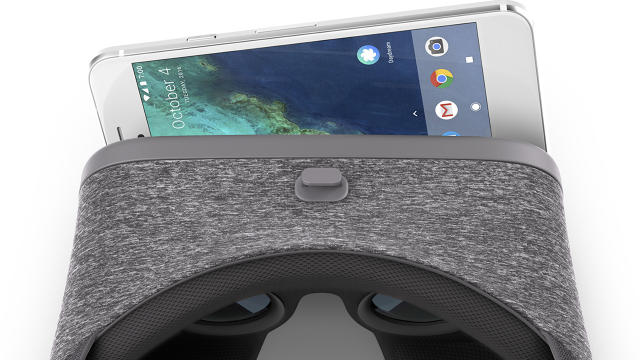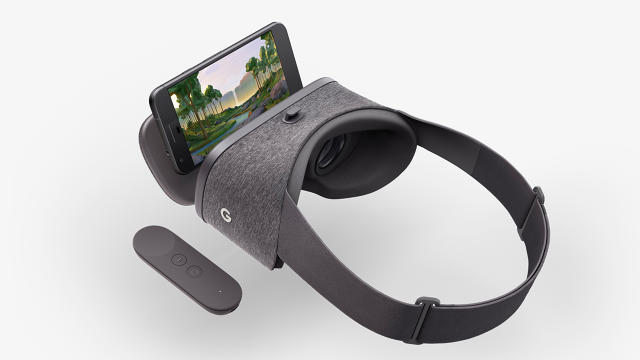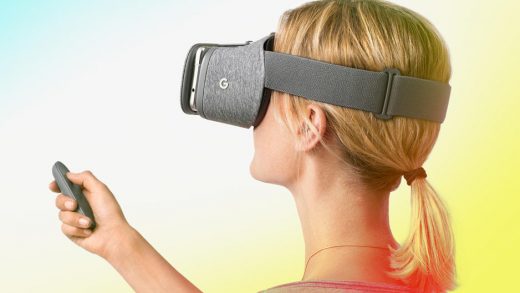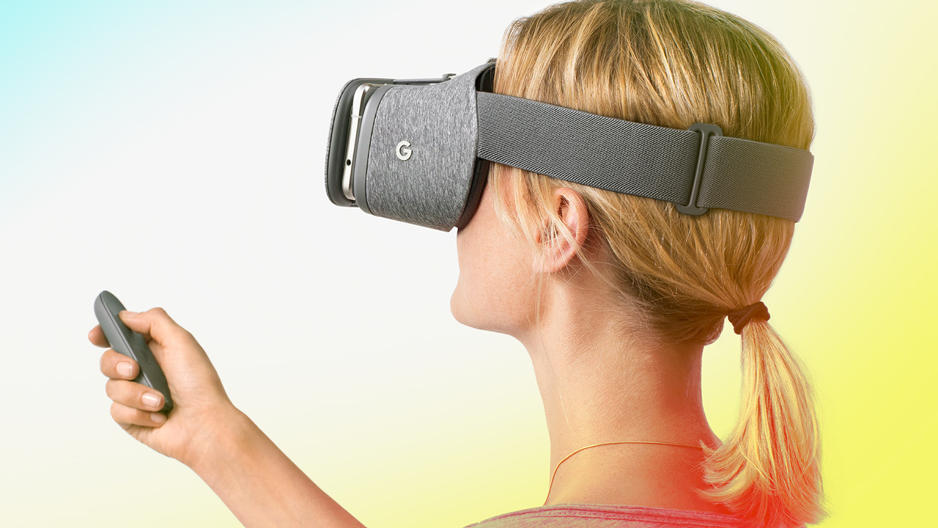Google’s Daydream View VR Headset Is Fun And Accessible, If A Bit Buggy
Today, Google’s new $79 mobile virtual reality headset, the Daydream View, goes on sale. Those who buy it will find it fun, charming, and easy to use, but also not quite ready for prime time.
The Daydream View works only with Google’s Android N mobile operating system, and at the moment, the only phone offering that is the company’s own Pixel.
That should change soon as major phone manufacturers release their own devices with the new OS. For the moment, though, the potential audience for the Daydream View is limited, given that the Pixel itself only just went on sale.
That’s probably a good thing. My feeling is that Google rushed the Daydream View to market to have it ready for the Pixel launch, thereby putting it in users’ hands without fixing a significant number of bugs that manifest through normal operation.

Still, if one assumes that most of those problems can be addressed through software updates, it’s fair to expect that they will be resolved sooner rather than later.
The Daydream View enters the consumer VR market alongside Samsung’s $99 Gear VR on a spectrum that extends from Google’s own low-cost, low-frills Cardboard to higher-end tethered devices (meaning they are connected by wires to a powerful computing device) like Sony’s $399 PlayStation VR, Facebook-owned Oculus’s $599 Rift, and HTC’s $799 Vive.
Virtual reality is now predicted to be a $38 billion industry by 2026, and Google, like many others, wants its piece of that pie. Its new device is meant to offer several meaningful advantages over the Gear VR. Those advantages include working with any Android N phone (rather than just high-end Samsung phones), being able to jump into VR in seconds, offering a free, handheld controller that expands users’ capabilities in VR, and finally, a set of rich, purpose-built new VR versions of first-party Google apps like YouTube, Street View, Play Movies, and Google Photos.
Those are, indeed, significant positives, particularly the controller, since it brings a richness and interactivity to mobile VR applications that the Gear VR can’t match. That it costs $20 less than Samsung’s offering is a big plus for those with a small budget for a VR device. If you’re just now thinking of getting yourself mobile VR and you don’t yet have a new phone, there are a lot of reasons you might want to think seriously about the Daydream View.
For one thing, it’s quite a bit more attractive than the Gear VR. Wrapped in a soft cloth fabric that comes in three distinct colors—slate at first, and snow and crimson later this year—the Daydream View is more approachable than Samsung’s hard plastic device. It’s also easy to open, and a major design feature lets you launch into VR by simply putting your phone inside and closing the cover without worrying whether the phone was placed in with precisely the right orientation. It achieves that with a series of clever sensors that can tell where the phone’s screen is and adjust the view accordingly.
By comparison, the Gear VR requires you to connect your phone in exactly the right way.
It’s not that big a difference, but over time, I suspect Daydream View users will really appreciate that simplicity.
Launch
When you launch Daydream—the VR platform itself—you find yourself in a pastoral setting. After going through a brief tutorial that explains how to use the controller, you can start using apps.
At launch, the pickings are a little slim—there’s the four Google apps, plus a few games, a star viewing tool, and a custom-designed Wall Street Journal app. By the end of the year, though, Google is promising a few dozen more, including numerous games and offerings from HBO, Netflix, Hulu, the New York Times, CNN, the NBA, and others.
Before Daydream was officially announced last month, Google lauded the way its first-party apps took full advantage of VR. For example, the company said the YouTube player would immerse you in 360-degree videos (at least those shot with 360-degree cameras), while standard YouTube videos would appear in a satisfying viewer that users could resize and reposition at their desire.
The immersive nature of 360-degree YouTube videos is fun. Watching a scuba-diving video, I felt very much like I was underwater, skirting large coral walls and actually wondering if I was handling my breathing the way you’re trained to do when you scuba. Another video, which places you amid a herd of elephants, was lovely and peaceful.
Watching a movie using the Play Movies app was interesting. The picture was very clear, and the size of the viewer was just about right—as if I was watching a movie on a big-screen TV that just happened to be on my head.
A Few Problems To Fix
But some of my fundamental issues with the Daydream View also came into play here.
Despite the device itself being somewhat lightweight, the headset and the phone together actually felt heavy and somewhat uncomfortable on my head the longer I wore it. Most other VR headsets have both a strap that goes behind your head and one that goes over the top. The Daydream View has only the strap that goes behind, which I think means the weight isn’t as evenly distributed as I’d have liked.
It made me feel, in the end, that I’m not at all sure I would want to watch an entire movie with the device—say, on an airplane—simply because I think the weight would be too much after 90-plus minutes.
Another selling point of the headset, as first explained to me by Google’s VR head, Clay Bavor, is that the controller can be safely tucked away inside the device itself so that users don’t lose it. It sounded very smart. In practice, though, I found that I wasn’t doing that, and almost lost the controller at least a couple times—and I’d expect others would do the same.

The longer I wore the device, the more I also felt slight motion sickness, something that many have complained about with VR headsets over the years, but a problem I had rarely experienced with the most recent hardware. Your mileage may vary.
As far as more software-oriented bugs, I found that the controller would sometimes misbehave—essentially the pointer that you use to select things would wander off. The phone itself sometimes got very, very hot, the volume buttons on the controller didn’t work at one point, and one time, the VR view was obscured by the phone’s operations.
As I said above, though, I assume that many of those issues are easily fixable, and that Google will tackle them shortly.
Fun And Accessible
In the end, my conclusion is that Daydream is a VR platform with a lot of upside. It’s still very early, and I would imagine that by the time a critical mass of consumers have Android N phones, many of the problems I’ve addressed here will be resolved. Then the question is whether the Daydream View is a device worth buying.
If you’ve already got a Pixel or another Android N phone, I would say, certainly. At $79, it’s a fairly inexpensive entry to a very nice—if not spectacular—VR experience. It’s got nothing on the Rift or Vive, but then again, it’s not trying to compete with those systems.
Google’s built something fun and accessible. Now it is up to developers to keep on churning out quality content for the device, and make sure that it handles the minor problems I’ve called out. If all of that happens, I predict you’ll soon be seeing Daydream Views in a lot of public places near you.
Fast Company , Read Full Story
(82)



